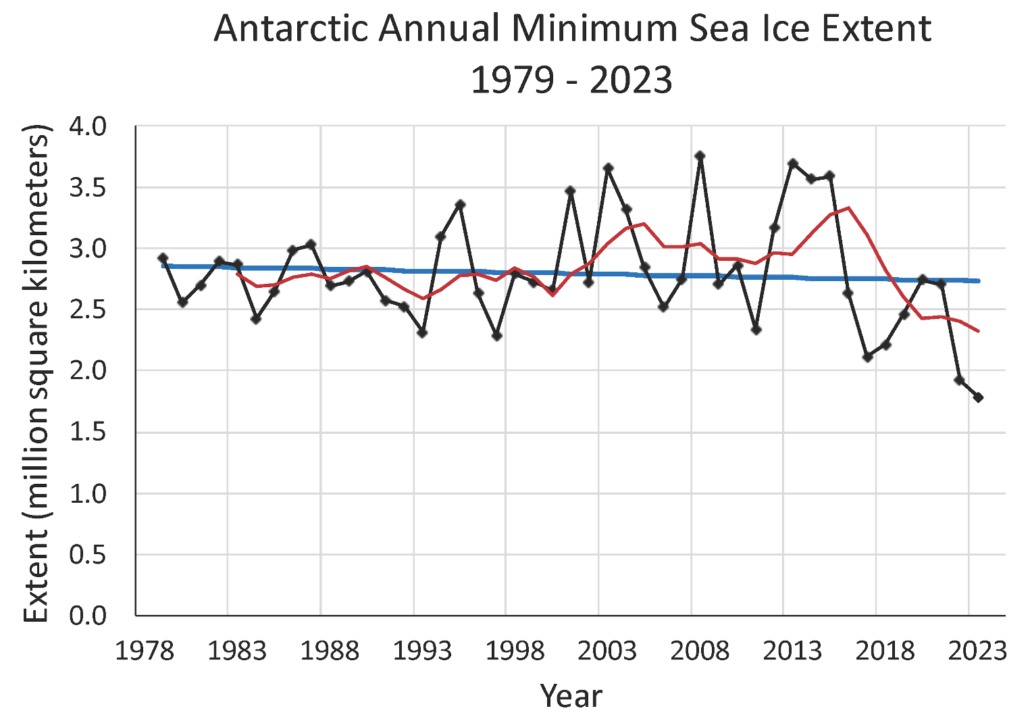Record Low Antarctic Sea Ice Extent in 2023
Last month, the amount of sea ice around Antarctic broke a new record low, according to the National Snow & Ice Data Center. This year’s minimum extent is the lowest recorded since 1979, and it broke the previous record low set just last year.

Following the low, and the peak of austral summer, the sea ice around Antarctica has now begun its seasonal expansion again.
But the impacts of this year’s record low, and its implications for the future are key questions Antarctic researchers are trying to figure out. At PAL LTER, we are trying to figure out how these trends are affecting the ocean and coastal ecosystems along the West Antarctic Peninsula and the Palmer Station region.
In response to this news, PAL Co-PI Cross Moffat was quoted in a recent CNN article, Antarctic sea ice hit record lows again. Scientists wonder if it’s ‘the beginning of the end’
In related coverage, The Guardian also highlighted the news in ‘Everyone should be concerned’: Antarctic sea ice reaches lowest levels ever recorded.


 This site was developed with the support of the National Science Foundation under Grant No. OPP-2224611 and OPP-2026045. Any opinions, findings, and conclusions or recommendations expressed in this material are those of the authors and do not necessarily reflect the views of the National Science Foundation.
This site was developed with the support of the National Science Foundation under Grant No. OPP-2224611 and OPP-2026045. Any opinions, findings, and conclusions or recommendations expressed in this material are those of the authors and do not necessarily reflect the views of the National Science Foundation.
